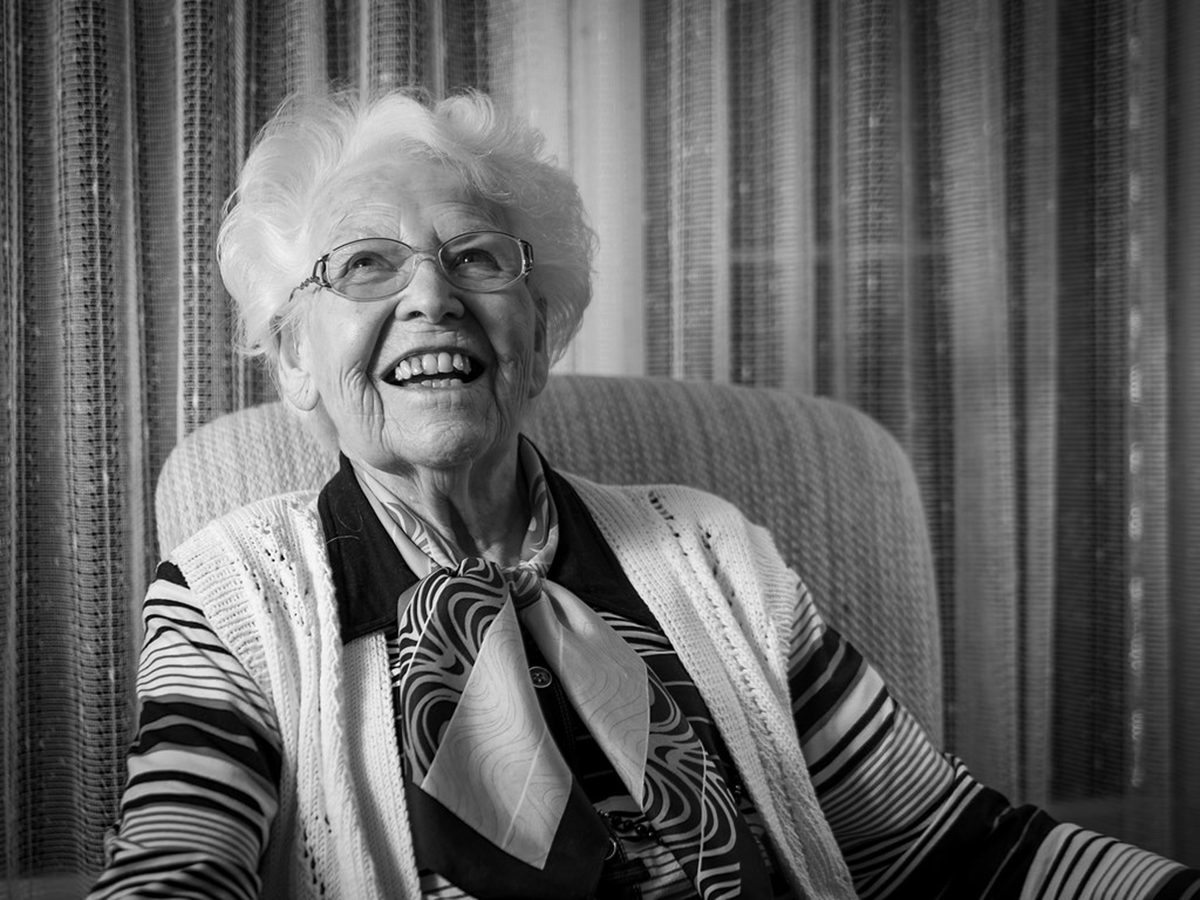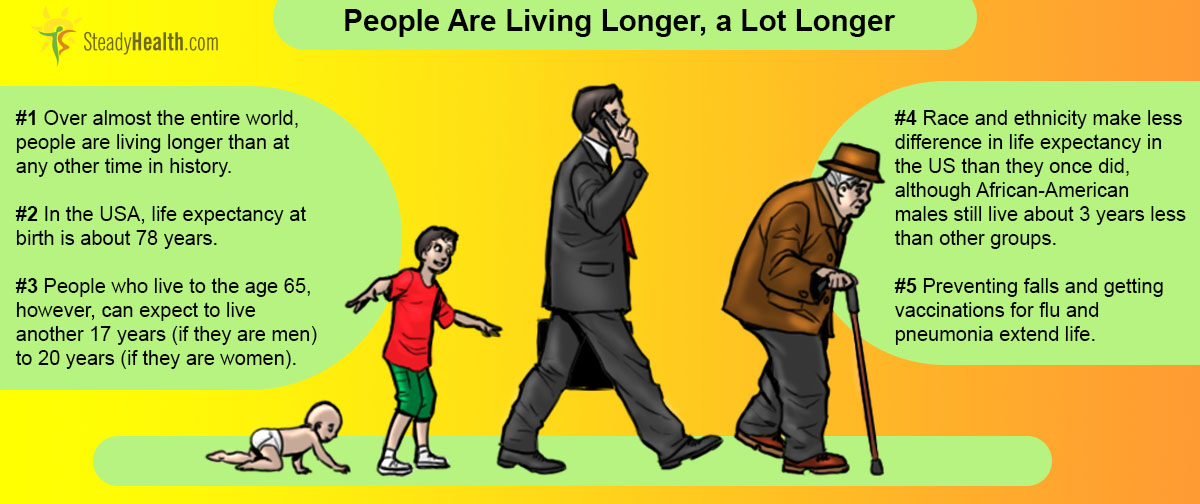I personally am a good example of how modern medicine is leading to longer lifespans.
Five years ago I was bitten by a rabid bat. The poor creature spiraled down from the sky, bit me hard on the ear, and fell to the pavement, dying of a seizure then and there. A few hours later I was in an ER getting the first of 12 rabies serum and vaccine injections, almost painlessly, saving me from a high likelihood of a gruesome death.
Previously told I had absolutely no signs of vascular disease, two months later I had a blood clot in an artery leading to my colon. Even now, many people die of bowel ischemia, or have to have emergency colostomies that change their lives forever, but I didn't have to have either. I was unwell for another year, but I emerged intact.
Modern Medicine Repairs Its Own Side Effects
Then, having been told repeatedly my heart was in great shape, I had a widowmaker heart attack. In the 1990's, my father had been the first person in a major hospital system ever to survive a complete blockage of the left anterior descending artery. I not only survived, but I could walk around my room the same day.
Then I had six painless surgeries, all of which I even watched on a screen in real time, to repair damaged arteries. I also survived two strokes and a brain aneurysm with no long-term damage. My grandfather had had stroke and/or a brain aneurysm in 1958. He lived only a few minutes.
Modern medicine, for some of us, is miraculous. And so many people enjoy good health that life expectancies all over the world are still going up.
Just How Long Can People Expect to Live?
As this article is being written, the latest data on longevity and life span for Americans (for 2012), released by the National Center for Health Statistics, find that:
- At birth, a baby girl born in the USA has a life expectancy of 81.2 years. A woman who has reached the age of 65, however, can expect to live another 20.5 years, to the age of 85.5.
- At birth, a baby boy born in the USA has a life expectancy of 76.4 years. A man who has reached the age of 65 can expect to live another 17.9 years, to the age of 82.9.
See Also: Building Muscle Could Help You See Old Age, A New Study Suggests
In the US, the good news is that gaps in longevity among different ethnic and racial groups have become much narrower. Statistics from 2011 show that Hispanics have the greatest life expectancy among Americans who reach the age of 65, another 20.7 years (age 85.7), whites follow with 19.2 years (age 84.2), and African-Americans are slightly behind with an average life expectancy of 18 years at age 65 (age 83). Death rates from Alzheimer's, cardiovascular disease, and cancer, have all fallen off, while only death rates from suicide have increased.
What Can Help You Beat The Odds?
If you are already 65, or 75, or 85, however, there's a strong possibility that you aren't "ready to go" quite yet.

- The death rates for Alzheimer's disease have fallen in recent years, but not as dramatically as the death rates for cancer and heart disease. Many experts suppose that the increase in Alzheimer's cases reflects the fact that people are living long enough to develop age-related cognitive decline and dementia. On a personal level, this suggests that if you want to live well in addition to living a long life, you should pay attention to any controllable factors for Alzheimer's disease (staying mentally active, staying socially active, avoiding high-fat diets, avoiding excessive alcohol consumption).
- Influenza and pneumonia are the eighth leading cause of death among all age groups in the US, and seventh leading cause of death in adults over 65. The risk of both conditions can be reduced by vaccination. Flu shots don't eliminate the risk of catching the flu, but they usually reduce it by about 2/3. The vaccination for bacterial pneumonia only has to be taken every 5 years.
- Unintentional injuries cause fewer deaths but greater loss of quality of life after age 65. Simply removing household hazards for falls and trips, and practicing breaking a fall and getting up when you fall down can prolong life and make life much more pleasant.
- Your race and gender are making less of a difference in the quality of care you receive. African-American men made the greatest gains in longevity in the most recent year for which the US Centers for Disease Control has made data public (2012). However, African-American males still have lower life expectancies than any other group in the US except Native Americans.
The increase in lifespans is not limited to the United States, People in nearly every nation on earth are living longer than they did in the twentieth century. In a few places, such as Monaco, Iceland, and Japan, life expectancies for people who have already reached the age of 65 are approaching or have exceeded 90 years, although in a few other countries, notably in sub-Saharan Africa, life expectancies have yet to break 60. Only 100 years ago, most babies born in the US, the UK, or Europe could only be expected to live to be about 50 years of age.
Not everyone, of course, is keen to live longer in old age.
See Also: Senior Health State By State In The USA
Most elderly people and their caregivers, however, are inclined to keep on muddling through life as long as it will last. At no other time in history have so many human beings live to be so old, so we will all have to figure it out together.
- Jiaquan Xu, M.D.
- Kenneth D. Kochanek, M.A.
- Sherry L. Murphy, B.S.
- Elizabeth Arias, Ph.D. Mortality in the United States, 2012. Centers for Disease Control and Prevention. http://www.cdc.gov/nchs/data/databriefs/db168.htm. Accessed 25 October 2014.
- Mind map by SteadyHealth.com
- Photo courtesy of Arileu via Flickr: www.flickr.com/photos/arileu/14070948607



Your thoughts on this